
He is Abu Faris Mawlay Abd al-Aziz ibn Mas'ud al-Dabbagh al-Idrisi al-Hasani, a luminous knower of God from Fez, born in 1679 (1090 AH). His family originated from the city of Salé in northwestern Morocco, where they settled at the beginning of the 16th century.
Shaykh Abdul Aziz ad-Dabbagh stands as one of the most profound spiritual masters in the Islamic tradition, pioneering a path of direct connection to the Prophet Muhammad (peace and blessings be upon him) through wakeful vision and constant immersion in the Prophetic Light. His teachings revolutionised spiritual practice by emphasising that the living, luminous presence of the Prophet (peace and blessings be upon him) is accessible to the sincere seeker in this very moment—not merely as a historical memory, but as a transformative encounter with divine reality.
His teachings were preserved by his devoted disciple Ahmad ibn al-Mubarak al-Lamati al-Sijilmasi (d. 1743/1156 AH) in the monumental work al-Dhahab al-Ibriz min kalam Sayyidi al-Ghawth Abd al-'Aziz al-Dabbagh (Pure Gold from the Words of Sayyidi Abd al-Aziz al-Dabbagh). This treasure of spiritual wisdom has been translated into English, making the Shaykh's secrets accessible to seekers worldwide.
Shaykh Abdul Aziz was one of the first masters to formally introduce the concept of Tariqa Muhammadiya (The Muhammadan Way)—a spiritual methodology focused on achieving wakeful visions of the Prophet Muhammad (peace and blessings be upon him) and recognising the luminous essence of the Prophetic reality. This was not metaphorical language but direct experiential knowledge: meeting the Prophet (peace and blessings be upon him) while fully awake, in a state of consciousness that transcends the limitations of ordinary perception.
The Shaykh and his spiritual successors—Shaykh Abdul Wahab al-Tazi and Shaykh Ahmad ibn Idris al-Fasi—were all known to have met the Prophet (peace and blessings be upon him) in wakeful states. About this extraordinary lineage, Sidi Muhammad ibn Ali as-Sanusi (d. 1859/1274 AH), head of the Libyan Sanussiya Tariqa, wrote:
All three teachers in this silsila (Dabbagh, Tazi and al-Fasi) took from and met the Prophet (peace and blessings be upon him), while awake and asleep and after their death, and in the last instance, none of them had any support except that of the Prophet (peace and blessings be upon him). This is one of the characteristics of the people of Tariqa Muhammadiya and a reason for it being so called, even though all [other] tariqas [also] return to the Prophet Muhammad (peace and blessings be upon him).
This represents a profound shift in spiritual healing and energy work: rather than relying solely on historical chains of transmission, the Muhammadan Way offers direct access to the Source—the living Prophetic Light that continues to illuminate hearts and heal souls across time and space.
In 1706 (1121 AH), Shaykh Abdul Aziz experienced a life-transforming encounter outside the sanctuary of the patron saint of Fez, Abu'l Hasan Sidi Ali ibn Harzihim (d. 1116/559 AH, teacher of Sidi Abu Madyan). There, he was met by al-Khidr (peace be upon him)—the mysterious guide of seekers, the immortal teacher who appears to those destined for direct divine instruction.
Al-Khidr transmitted to Shaykh Abdul Aziz a powerful wird (litany)—a spiritual practice that would become the key to unlocking the Prophetic Presence. The practice was deceptively simple yet profoundly transformative: invoking this sacred formula seven thousand times each day:
اللَّهُمَّ يَا رَبِّ بِجَاهِ سَيِّدِنَا مُحَمَّدِ بْنِ عَبْدِ ٱللّٰهِ صَلَّ ٱللّٰهُ عَلَيْهِ وَسَلَّمَ ٱجْمَعْ بَيْنِىْ وَبَيْنَ سَيِّدِنَا مُحَمَّدِ بْنِ عَبْدِ ٱللّٰهِ فِي ٱلدُّنْيَا قَبْلَ ٱلْآخِرَةِ
Allāhumma ya rabbi bi-jāhi Sayyīdinā Muḥammadi-bni 'Abdi Llāhi ṣalla Llāhu 'alayhi wa sallama-jma' bayni wa bayna Sayyīdinā Muḥammadi-bni 'Abdi Llāh fī d-dunya qabla l-ākhira.
"O God, O my Lord, by the rank of our master Muhammad the son of Abdullah, gather me with our master Muhammad the son of Abdullah in this World before the Next."
This litany became the foundation of what Shaykh Abdul Aziz called the Muhammadan Spring (al-manba'a al-Muhammadi)—a fountainhead of spiritual energy flowing directly from the Prophetic Presence.
Shaykh Abdul Aziz described his experience with this practice in terms that every sincere spiritual practitioner will recognise—the journey from difficulty to ease, from effort to grace:
I persisted in performing this remembrance. The first day, it was difficult for me, and I didn't complete it until night had fallen. But little by little it began to get easier. My body grew accustomed to the remembrance so that I'd complete it by noon. Then it grew easier for me until I'd complete it by mid-morning. Finally, it became so easy that I'd complete it by the time the sun had risen.
This progression reveals the alchemical nature of spiritual practice: what begins as struggle transforms into natural flow as the subtle body recalibrates to higher frequencies. The invocation rewires the energetic system, gradually attuning consciousness to the Prophetic wavelength.
For modern energy healers, this teaching is profound: consistent practice literally reshapes our energetic capacity. What feels impossible at first becomes effortless as our spiritual "muscles" develop and our energy channels open.
Three years after beginning this litany—three years of daily invocation, of persistent yearning, of continuous remembrance—the moment of divine ordination arrived.
When God decreed that the meeting would occur, Shaykh Abdul Aziz "forwarded and oriented his heart and eyes to the Prophetic Light that exists between the tomb of our master Muhammad (peace and blessings be upon him) in Medina and the barzakh (the intermediate realm between the physical and spiritual worlds)."
What happened next transcends ordinary description: The Prophetic Light began moving from Medina toward the Shaykh in Fez—across physical distance, through spiritual dimensions—until the Prophet Muhammad (peace and blessings be upon him) emerged from it.
At that sacred moment, the Prophet Muhammad (peace and blessings be upon him) became the Shaykh of Abd al-Aziz al-Dabbagh.
This was not imagination, not metaphor, not dream—this was mushahadat ad-Dhat sharifa, the wakeful vision of the Noble Essence of the Prophet (peace and blessings be upon him). The Shaykh had achieved direct, unmediated connection to the Source of all spiritual knowledge and healing.
Based on this transformative vision, Moulay Abd al-Aziz al-Dabbagh founded the Khadiriyya Muhammadiya Tariqa in Fez at the beginning of the 18th century. This path was internally and externally based on the lasting vision of the Prophet Muhammad (peace and blessings be upon him).
What made this tariqa unique was its silsila (spiritual chain of transmission). While traditional Sufi orders like the Shadhili, Khalwati, Naqshbandi, and Qadiri possess chains of transmission passing through generations of shaykhs back to the Prophet (peace and blessings be upon him), Shaykh Abdul Aziz's chain went directly to the Prophet Muhammad (peace and blessings be upon him) through al-Khidr (peace be upon him), bypassing the historical lineage of masters.
This was the Maghribi (North African) equivalent of the 'Uwaysi methodology in the Mashriq (Middle East)—a direct transmission that occurs through spiritual connection rather than physical discipleship. It represented a radical democratisation of spiritual access: the door to the Prophet (peace and blessings be upon him) is always open to those with sincere hearts and persistent practice.
Notably, even though Shaykh Abdul Aziz had inherited the sirr (secret) from his contemporary Shadhili master Shaykh Ahmad ibn Abdallah al-Fasi (d. 1723/1129 AH), his teaching focused not on traditional Sufi methodology but on developing spiritual concentration on the "power of light" of the dhat (essence) of the Prophet (peace and blessings be upon him).
Shaykh Abdul Aziz taught that there are levels to spiritual opening (fath):
The goal of the mystic path is illumination (fath)… Two kinds are distinguished: the normal fath and the ultimate, all-inclusive, al-fath al-kabir (the Supreme Opening)…
Certainty (tahqiq) and real enlightenment only occur if the mystic passes through all the material and spiritual worlds and is honoured with the wakening vision of the Prophet (peace and blessings be upon him).
After this experience, he is omniscient and permanently protected against error (ma'asum). His knowledge is far superior to that of all others, in particular to that of the theologians and the jurists…
Attaining opening signifies that the partition between Dhat (Essence) and Ruh (Spirit) has been removed: the enlightened individual has reached a state like that of the Prophet (peace and blessings be upon him).
This is the apex of spiritual realisation: when the veils between the seeker and the Prophetic Reality dissolve completely. The enlightened person (al-maftuhu alayhi) becomes a clear channel for Prophetic light and healing energy to flow into the world.
How does one achieve this state? Shaykh Ahmad ibn al-Mubarak, the Shaykh's primary disciple, described the methodology:
Indeed, this Way is based upon inner immersion, which is accompanied by modelling oneself on the Prophet (peace and blessings be upon him) in word and deed, thus seeing him (peace and blessings be upon him) as he is in flesh and blood, and engaging one's tongue in tasliya (sending prayers upon the Prophet (peace and blessings be upon him)) and busying oneself with uttering this at all times, in private and in public, so that it overwhelms one's heart and that glorifying him permeates one's inmost being, so that one trembles by hearing him mentioned, and witnessing the Prophet (peace and blessings be upon him) takes possession of his heart and his outward figure appears before his inner eye.
This is not casual practice—this is complete absorption. The practice involves:
Shaykh Abdul Aziz described the mental state required for wakeful vision of the Prophet (peace and blessings be upon him):
His mind is constantly occupied with the noble Prophet (peace and blessings be upon him), such that the Prophet (peace and blessings be upon him) never leaves his thoughts. Other matters he is busy with do not cause him to stop thinking of the Prophet (peace and blessings be upon him).
People see him eating, but his thoughts are with the Prophet (peace and blessings be upon him); people see him drinking, but his thoughts are with the Prophet (peace and blessings be upon him). Even when he is asleep, his thoughts are with the Prophet (peace and blessings be upon him).
This represents a complete rewiring of consciousness—where the background hum of awareness is always tuned to the Prophetic frequency. It's similar to being deeply in love: the beloved never leaves your mind, even as you go about daily tasks. This constant orientation creates a magnetic pull that draws the Prophetic Presence into manifestation.
For energy healers, this teaching is invaluable: healing presence flows through those who maintain continuous conscious connection to the Source.
Shaykh Abdul Aziz explained the metaphysics of seeing the Prophet (peace and blessings be upon him) in dreams and visions:
Whoever sees the Liege-Lord of being (sayyidu al-wujud) in a dream can do so in two ways… Usually what is seen is the image of the Dhat (suratu datihi), not the Dhat itself ('aynu datihi), since the Dhat of the Prophet (peace and blessings be upon him) can take on various forms…because the Dhat of the Prophet (peace and blessings be upon him) possesses light which emanates from it and fills the entire world…
If an enlightened person (al-maftuhu alayhi) beholds the image (sura) of the Prophet (peace and blessings be upon him) before him, he then follows it with his spiritual insight (basira) and penetrates through the light of the image to the being of the Prophet (peace and blessings be upon him) himself.
This is sophisticated spiritual technology: the Prophet (peace and blessings be upon him) has a luminous essence (Dhat) that radiates throughout existence. What most people perceive in dreams is an image or form (sura) created by this light. But the truly awakened can penetrate through the form to the Essence itself—achieving direct energetic contact with the Prophetic Reality.
This explains why different people may see the Prophet (peace and blessings be upon him) in different forms: they're perceiving various manifestations of the one Prophetic Light, shaped by their own spiritual capacity and karmic patterning. The advanced practitioner learns to see beyond the form to the formless essence—the pure healing presence that transcends all images.
Shaykh Abdul Aziz ad-Dabbagh passed from this world in 1719 (1132 AH) and was buried in the Bab al-Futuh Cemetery in Fez—the same cemetery where Shaykh Muhammad al-Qandusi would later be buried. He rests near the tomb of al-Anwar, between the graves of Sayyidi al-Darras ibn Ismail and Sayyidi Ali ibn Salih. A cupola was erected above his grave, which still stands today as a sanctuary of baraka and spiritual energy.
Though he left the physical realm over three centuries ago, his spiritual presence remains potent. His teachings were transmitted through luminous heirs like Shaykh Abdul Wahab al-Tazi and Shaykh Ahmad ibn Idris al-Fasi, creating a golden chain of Prophetic vision that continues to this day.
Shaykh Abdul Aziz ad-Dabbagh's life and teachings offer transformative guidance for contemporary spiritual practitioners:
You don't need an unbroken chain of physical teachers to access the highest spiritual realities. With sincere intention, persistent practice, and divine permission, direct connection to the Prophetic Presence is available.
The Shaykh's practice of invoking the gathering with the Prophet (peace and blessings be upon him) 7,000 times daily for three years demonstrates the alchemical power of repetition. Spiritual transformation requires sustained effort—not sporadic attempts, but daily commitment over years.
Spiritual practice begins as a struggle but transforms into a natural flow. This is the sign of genuine progress: what once required tremendous effort becomes spontaneous and effortless as your energetic capacity expands.
Continuous prayers upon the Prophet (peace and blessings be upon him) are not merely devotional acts—they are the most potent method for opening subtle energy channels, receiving divine transmission, and becoming a vessel for healing light.
Casual practice produces casual results. Complete saturation—thinking of the Prophet (peace and blessings be upon him) while eating, drinking, walking, sleeping—rewires consciousness at the deepest level and magnetises the Prophetic Presence into manifestation.
Advanced spiritual perception involves seeing through appearances to essence. The enlightened healer learns to perceive the Prophetic Light that permeates all existence and to channel that light for the purpose of healing.
Understanding that the Prophet's (peace and blessings be upon him) luminous essence radiates throughout creation means recognising that healing presence is omnipresent. We don't create it—we learn to attune to what's already there.
By embodying Prophetic character (akhlaq) and following Prophetic practice (sunna), we create resonance with the Prophetic frequency. Like tuning a radio to the right station, proper alignment allows clear reception of divine transmission.
For those called to follow this path, begin with the litany that Shaykh Abdul Aziz received from al-Khidr (peace be upon him):
اللَّهُمَّ يَا رَبِّ بِجَاهِ سَيِّدِنَا مُحَمَّدِ بْنِ عَبْدِ ٱللّٰهِ صَلَّ ٱللّٰهُ عَلَيْهِ وَسَلَّمَ ٱجْمَعْ بَيْنِىْ وَبَيْنَ سَيِّدِنَا مُحَمَّدِ بْنِ عَبْدِ ٱللّٰهِ فِي ٱلدُّنْيَا قَبْلَ ٱلْآخِرَةِ
"O Allah, O my Lord, by the rank of our master Muhammad the son of Abdullah, gather me with our master Muhammad the son of Abdullah in this World before the Next."
Start where you are. Even if you can only manage 100 repetitions daily, begin there. Trust the process. As the Shaykh demonstrated, what seems impossible at first will become natural with persistence. The light that moved from Medina to Fez for Shaykh Abdul Aziz continues to move toward every sincere heart that calls upon it.
The door is open. The invitation stands. The Prophetic Light awaits your arrival.
May God illuminate our hearts with the Muhammadan Light and grant us the wakeful vision of our Beloved (peace and blessings be upon him) in this world before the Next. Amin.
To explore these teachings further, seek out the English translation of "al-Ibriz" (The Pure Gold) by Ahmad ibn al-Mubarak, where the complete teachings of Shaykh Abdul Aziz ad-Dabbagh are preserved. Begin your practice with love, sincerity, and persistence—the rest will unfold according to divine wisdom.
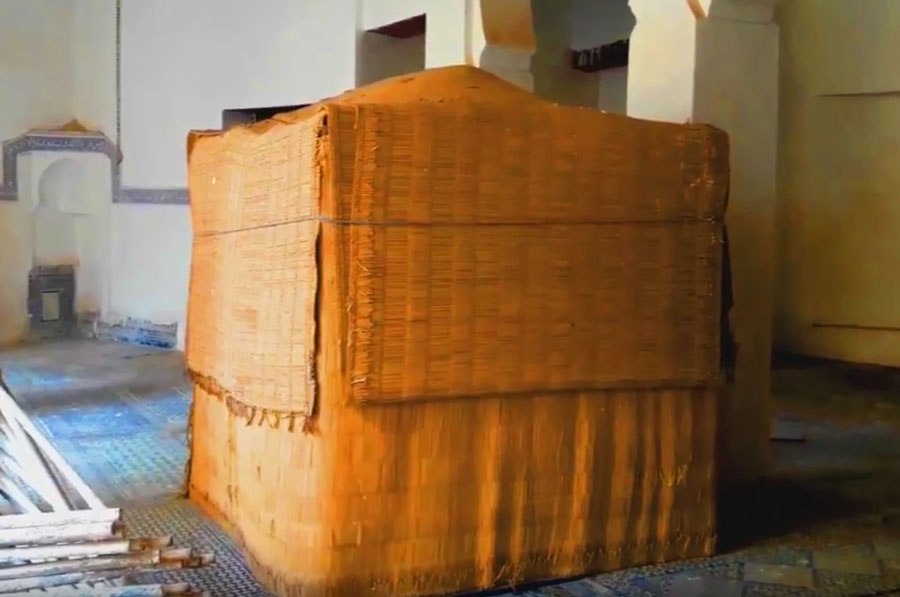
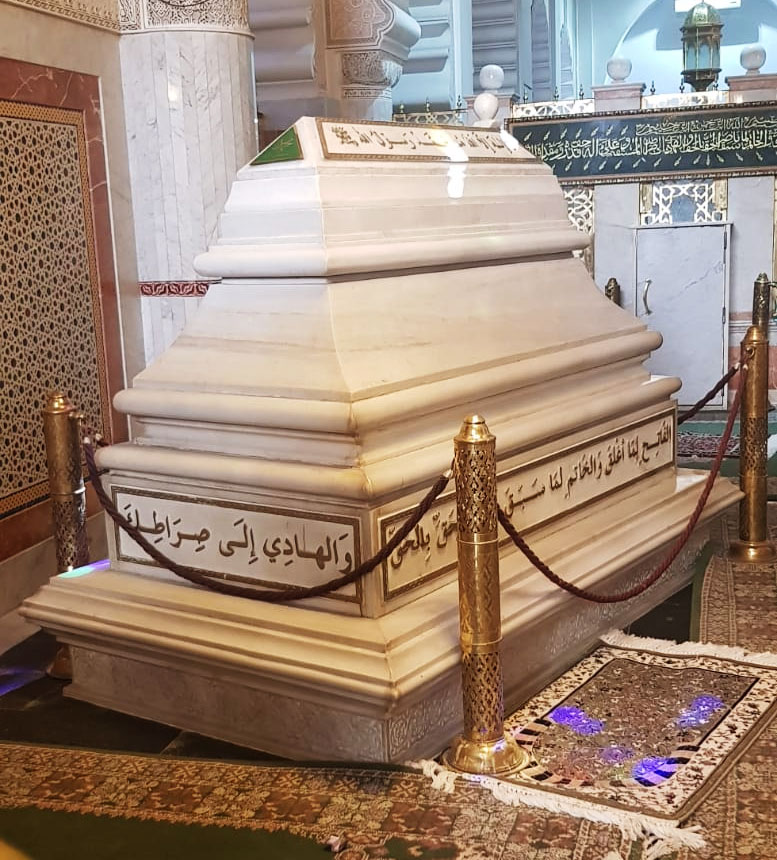

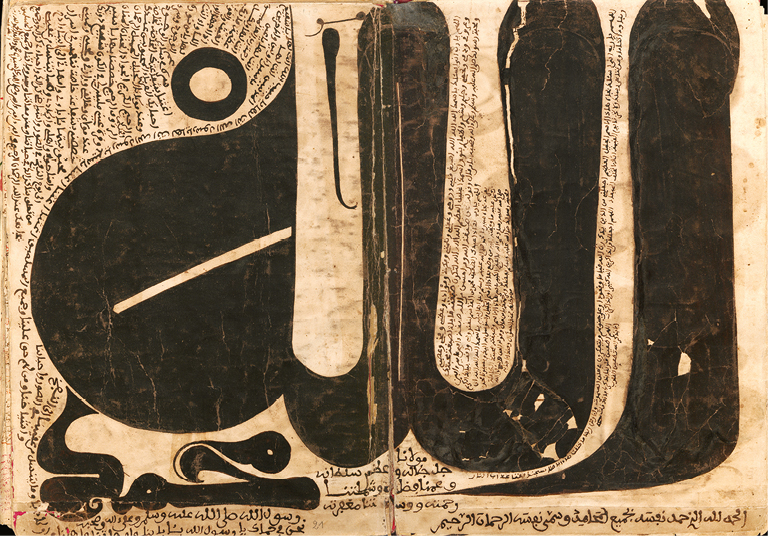
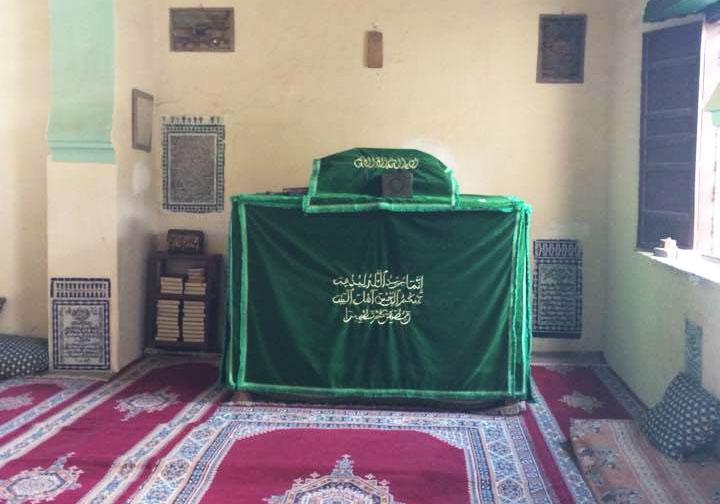


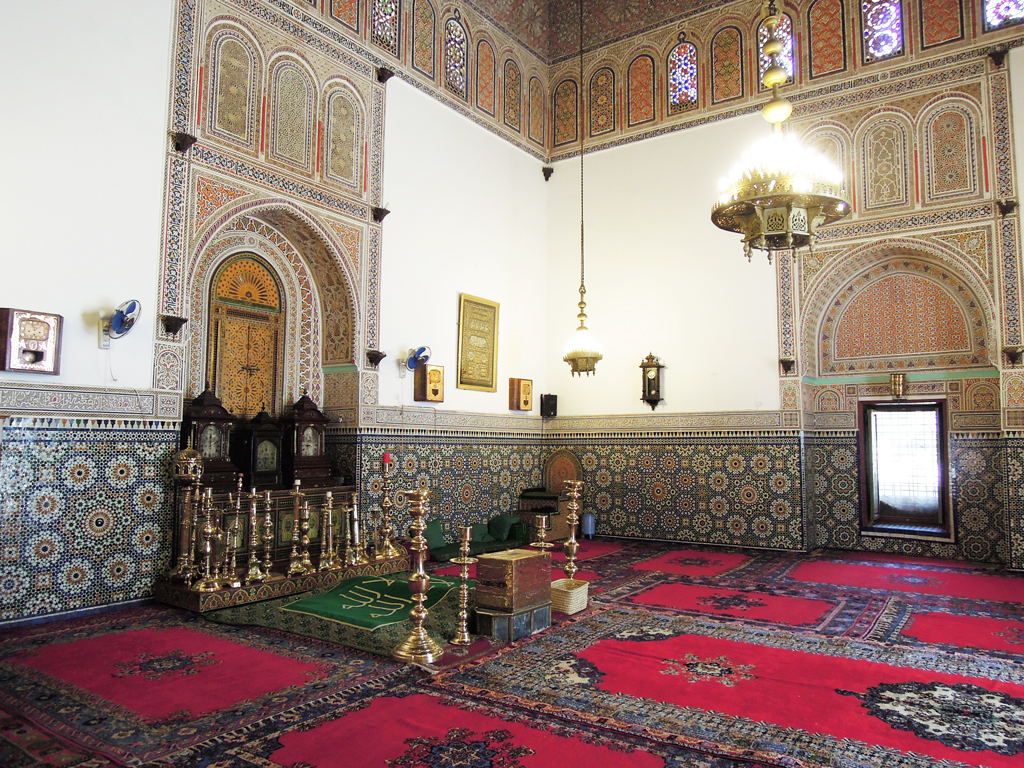





























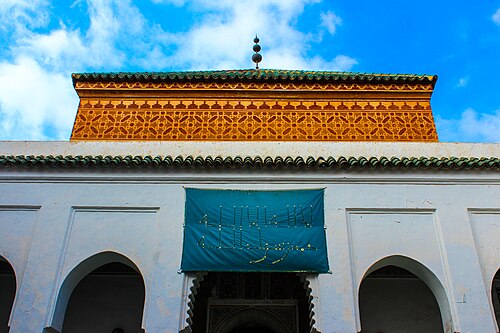





Find all our meditations on the Nur App!
Experience tranquillity through Qur'anic recitations and meditations on our Nur App and develop healthy spiritual routines to maintain your God-given Nur (light).
